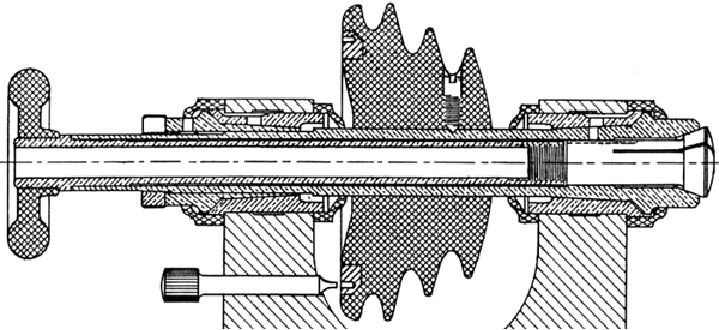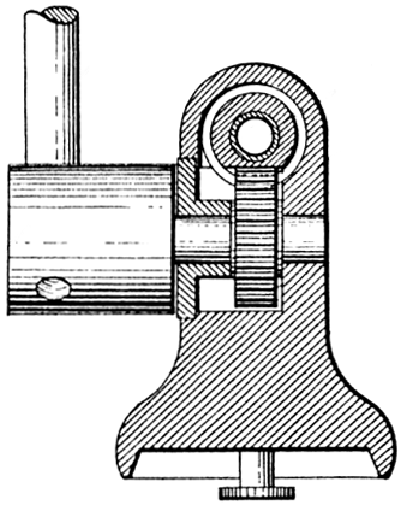|
Home Machine Tool Archive Machine-tools for Sale & Wanted Derbyshire & WW Lathes Home Page Magnus Lathe Elect Lathe Model 750 Model A Micromill Derbyshire Precision Drill Derbyshire Collets Pinion Cutter |


|
Lever-operated slide rest with front and rear toolposts. Often used for forming fork - or for parting off with an inverted tool in the rear post. |
||

|
Screw-feed cross slide and lever feed tool slide - this was listed as being available for all but the smallest of the Derbyshire lathes. |
||

|
|
||
|
Double Compound rack and pinion driven slide rest. |
||

|
|
||


|
The simplest form of tailstock available for a watchmaker's lathe. The "push barrel" is capable of holding small collets and the unit is intended for centring, turning work between centres and checking the concentricity of components. |
||
|
|
||


|
Plain (no screw or lever feed) but heavier-duty tailstock which holds the same type of collet as the headstock. This design was available for the WW, Large Lathe, Magnus, Elect 750 and Model A. |
||

|
The most complete, versatile (and expensive) of the tailstocks the "Combination" had a rack-and-pinion drive to the barrel - and accepted the same collets as the headstock. A version of this tailstock was available for all Models of Derbyshire lathe |
||

|
Lever-action Revolving Tailstock - intended for deep-hole, high-precision, small-diameter drilling this was, in effect a modified headstock which allowed a drill, held in a collet, to be rotated at very high speed. A micrometer barrel was attached to the side of the unit to allow precise depthing. |
||
|
|
||


|
Closed tailstock with lever feed - designed for the same type of work as the open tailstock - but slower and more cumbersome to use, if rather safer and stronger when handling heavier jobs. |
||
|
The Half-open tailstock is a traditional design originally intended for light duty, mass-production work. The idea is to have a selection of barrels to hand, each equipped with a different tool, so that a series of operations can be carried out in rapid succession - in effect, a poor-man's capstan unit. |
||


|
Designed to fit the Magnus and Elect lathes (but also used on many other makes of watchmakers' lathes) the Snyder-Bezel 6-jaw chuck was designed to grip thin work with either its outer or inner rings. The six hardened jaws were moved by rotating the outer milled ring on the inside of which was machined a highly-accurate scroll. This type of workholder is sometimes referred to as a "ring-scroll" chuck. |
||


|
2.5" diameter Precision Universal 3-jaw chucks with "ring-scroll" operation. |
||

|
An American Watch Tools Company drawing from about 1890 showing a section through the headstock of an early WW lathe. The unit consisted of the main "frame", a Spindle, a Rear Adjusting Bearing, a Bearing Adjusting Nut and the Headstock Bearings themselves. All the bearing surface were hardened, ground and finally lapped to a perfection of fit. |

|
A drawing from 1950 of the headstock fitted to the Magnus lathe - with the same 50 mm centre height as a standard WW, but with a collet capacity of 0.3125" (5/16" - or 80 metric) compared to the 0.1969" (50 metric) of the original. |
||


|
|
||
|
|
||

|
|
||

|
End elevation of the Combination Tailstock. |
||

|
|
||
|
Magnus Lathe Elect Lathe Model 750 Model A Micromill Derbyshire Precision Drill Derbyshire Collets Pinion Cutter Home Machine Tool Archive Machine-tools for Sale & Wanted |